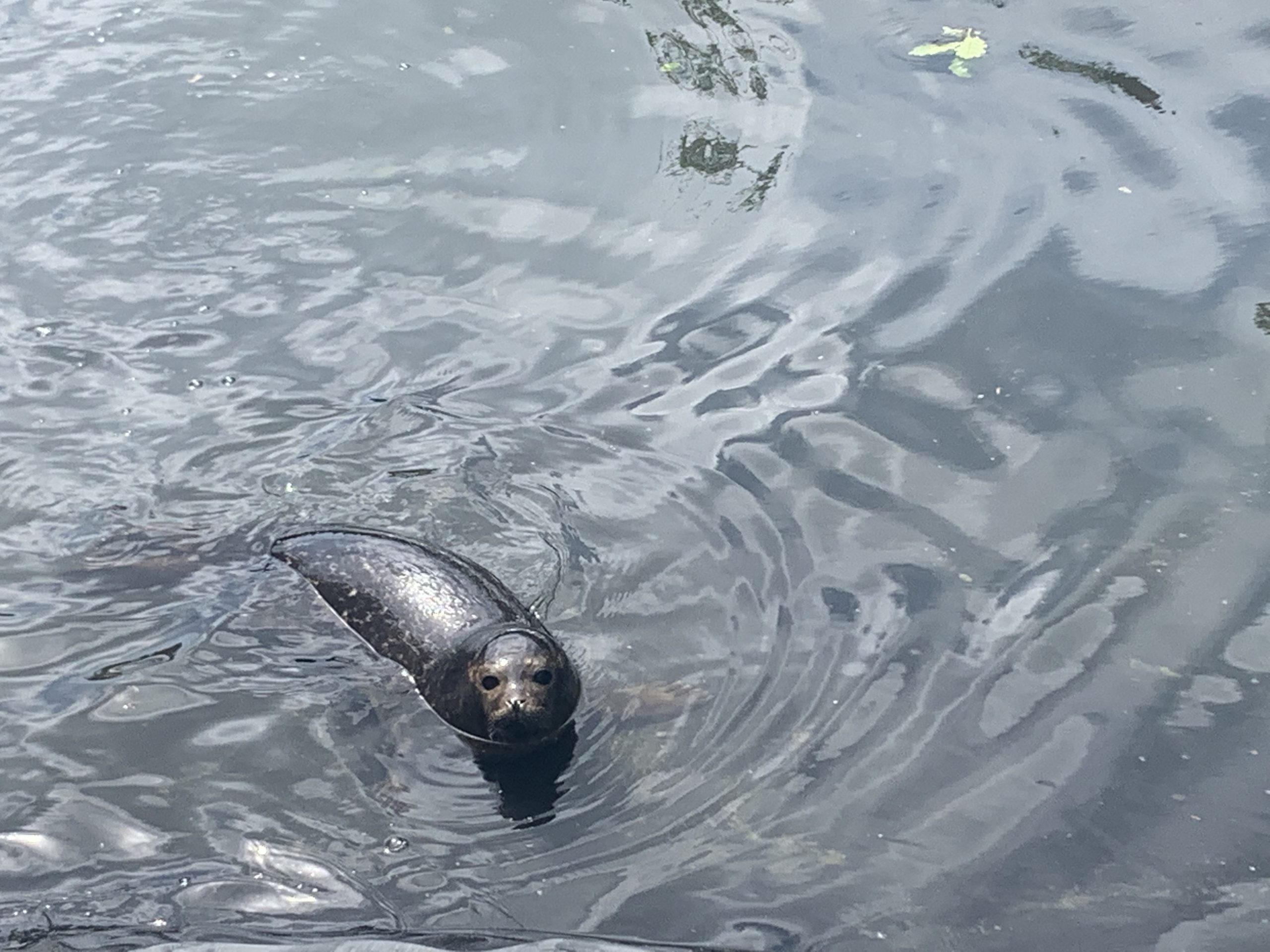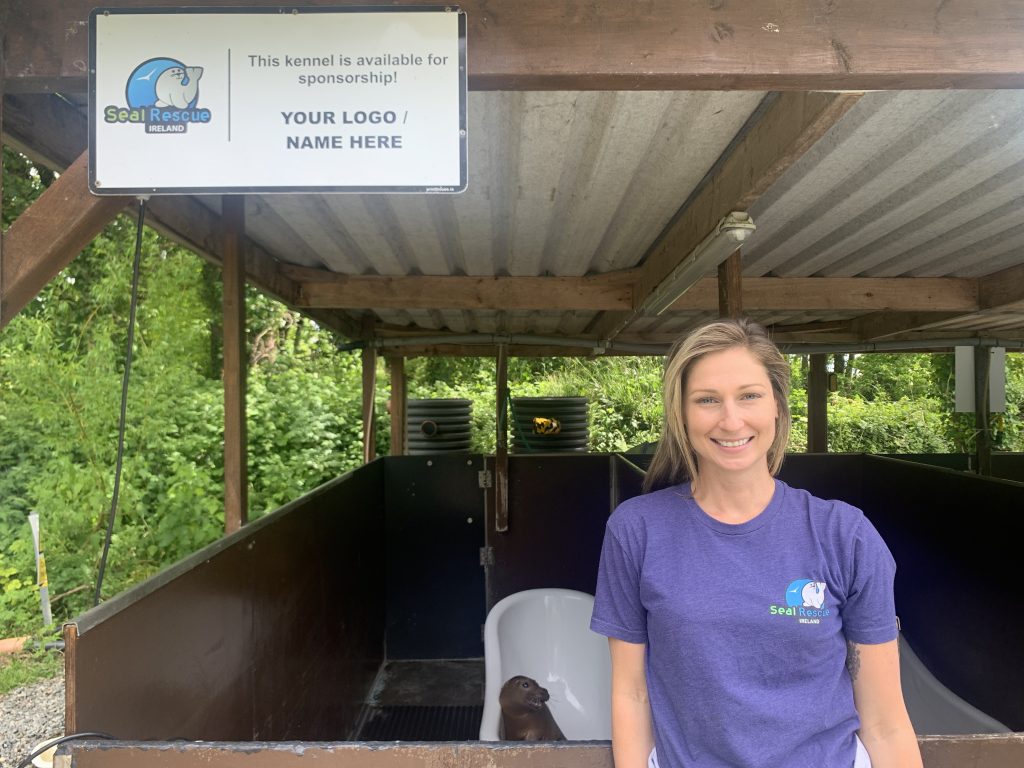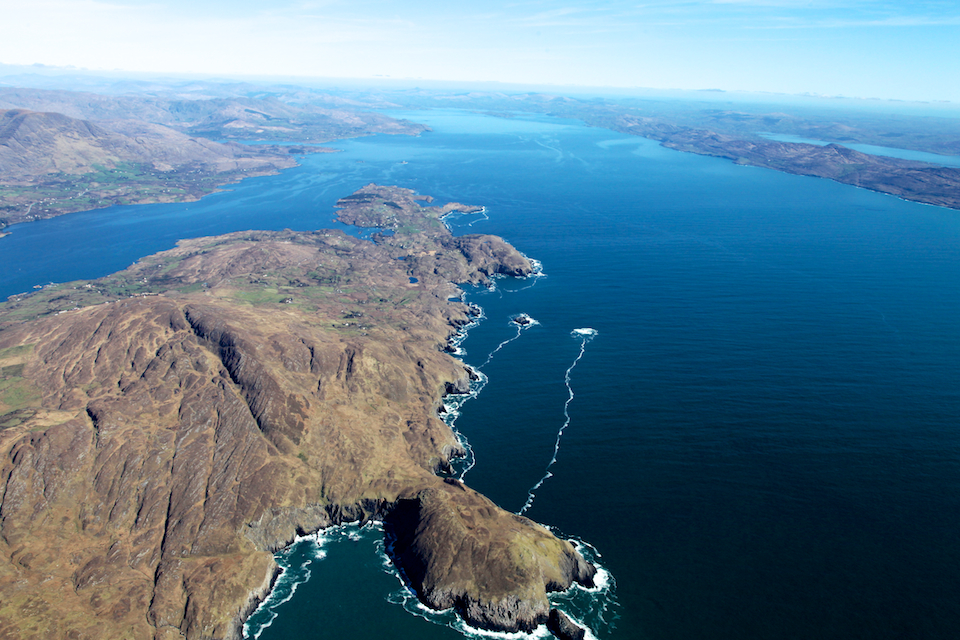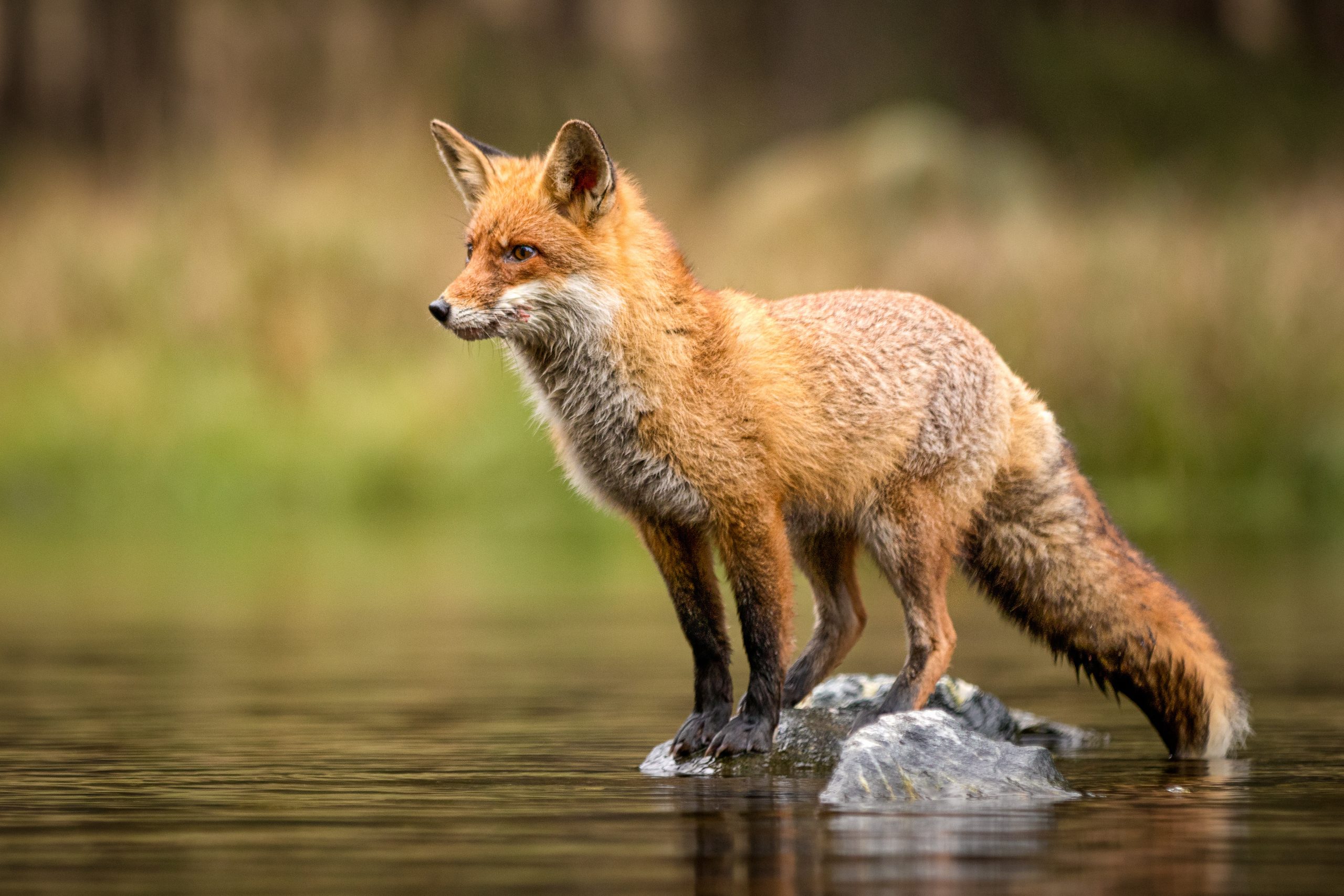Biodiversity spotlight: grey and common seals

26 May 2022
There’s been no shortage of big storms landing in Ireland over the past few years. There’s been Ophelia, Emma and Ciara – to name a few. They’ve wreaked havoc on different parts of the country – and because of climate change they are set to be more severe over time.
There’s also a chance that you or somebody you know has been badly affected by the storms here in recent years. But a population you might not think of has also been negatively impacted: seals.
After hurricane Ophelia, Seal Rescue Ireland received over three hundred phone calls in a single week for seals all over the coastline. There were some seal rookeries that lost up to 80% of their pups during the storm.
Seal Rescue Ireland in Courtown, Wexford, is Ireland’s only seal rescue centre. They are a charity that focuses on the rescue, rehab, and release of sick, injured, and orphaned seals.
Even with just one rescue centre in the Republic of Ireland that has been active for the past 12 years, the whole coastline is covered by the organisation thanks to over 800 trained volunteers from all over the country.
2020 was record-breaking with 170 intakes in a single year. During lockdown, people were out exploring their beaches and happened upon them.
“It is great that people were using that as an opportunity to appreciate nature, but it also meant that there were lots of opportunities for disturbance,” said Melanie Croce, executive director at Seal Rescue Ireland.
“Unlike whales and dolphins, seals have to come up on land. When people are on the beach walking their dogs or if there’s any sort of jet skis or developments or noise, they’re going to be frightened off and that does result in a lot of orphans.”
However, there was a “bright side” to more people out on beaches for seals, according to Ms. Croce.

Executive Director at Seal Rescue Ireland Melanie Croce
“The majority of seals that needed help was getting reported to us just because there more eyes and ears out there. It’s getting harder and harder to deny that there is a climate and biodiversity crisis, therefore more people are trying to do their part in helping wildlife,” she told The Green News.
Seal pups & storms
There are two species of seal in Ireland, the grey seal, which breed during autumn and winter, and the common seal which breed during summer months.
Seal Rescue Ireland are at their busiest near the breeding seasons. Big storms coincide with the grey seal pupping season, causing concern for the pups: they can get separated from their mothers prematurely, they could drown, they get washed out to sea, and they could get injured.
“There are only about 3000-4000 common seals left in Irish waters and the numbers are on a decline. That means every individual that we are able to rescue, rehab, and release back into the wild population is really crucial to that overall population,” said Ms. Croce.
The grey seal pups have a fluffy white coat when they are born so they need to stay on the beach for the first 2-3 weeks as they put on blubber and develop a waterproof coat.
They learn everything based on instinct; they have parental care for only the first couple of weeks of their lives as they grow and are then left by the mother to figure out life on their own, and many do not survive their first year.
Common seals are born with their waterproof coat, so they are in the water straight away and learn from their mother how to hunt, survive and interact with other seals. If a common seal is separated from its mother too soon, it doesn’t get the chance to learn natural behaviours, as they lack the built-in instincts that the greys have.
“It doesn’t know how to eat, it doesn’t know how to hunt, and it would starve to death if they became separated before these skills are learned.
That is why common seals are a bit harder to rehab, it takes longer because we have to teach them how to eat, it’s called fish school,” Ms. Croce said.
What problems are seals facing?
There a number of them – including plastic pollution, illnesses, biodiversity loss and climate change.
If business-as-usual remains intact, by 2050 there’s set to be more plastic in the ocean than fish. Seals are opportunistic predators, which means they’ll eat a variety of different prey, and they won’t just go after one thing.
If they see something like a shiny crisp packet floating around in their environment, they’re likely to mistake it for a fish. Unfortunately, it takes only one piece of rubbish to kill a seal because it blocks any other food from entering their stomach.
“Ireland is the largest producer of plastic waste per person in the EU and we are completely surrounded by water, where a lot of this waste ends up being found by the seals and all the other creatures in that ecosystem,” Ms. Croce highlighted.
A lot of plastic waste in the ocean is ghost net, which means trawler net, fishing line, gillnetting, all these are plastics designed to catch and keep wildlife.
“We do get a lot of seals in that have entanglements. A seal that is in the centre right now has scars on her neck because she had become trapped in plastic fishing line. The entanglements were removed and she’s in recovery now and will be released when she reaches 35 kilos which is the target weight for a grey seal,” she added.
The problems that come with the netting left in the ocean is the size of the gaps within them. The seals are getting stuck and cut by the netting left in the ocean as they try to feed themselves on caught fish.
Fishermen are using nets that stay in the water for a couple of days and seals swoop in and feast on fish that are caught there.
“There’s no doubt that this is a problem for the fishermen, but maybe the solution to that is to stop using those nets and build other types of fishing nets,” Irish Wildlife Trust Campaigns Officer Padraic Fogarty told The Green News.
There;s also the issue of intestinal worms finding their way to a immunocompromised or baby seal, as well as the risk of raw sewage to their immune system.
Storms and rise in sea levels mixed with coastal erosion is a fatal amalgamation of circumstances for seals as they ultimately damage and reduce their habitat space.
“A lot of times you’ll hear about these massive seal colonies that are overpopulated on very isolated patches such as the Saltees and the Blaskets. The only reason you see these pockets with large numbers of seals is because they really don’t have anywhere else to go,” according to Ms. Croce.
“There are vast amounts of coastline, particularly along Wicklow and Wexford where they really don’t have strong holdouts and they have to swim really long distances to find somewhere where they can rest undisturbed by humans.” she added.
And how can the situation improve?
“We need to prioritise the recovery of ocean ecosystems at the end of the day, and if that involves working with fishermen in creating no take zones or recovery areas where there’s no fishing for a certain amount of time then those are the things we need to be doing,” Mr. Fogarty told the Green News.
There are Marine Protected Areas (MPAs) in Ireland, but not every species or area gets their own designated protected section of the sea.
Less than 2.3 per cent of Irish waters are currently classified as protected, despite the government’s target of 10 per cent by 2020.
No take zones and recovery areas are essential to the survival and growth of seals in Irish waters, as well as to ensure the future of the fishing industry.
The population of the common seal is on the decline and the benefits of MPAs could determine the future of the species and our marine territory.
For information on Seal Rescue Ireland, check out their website.
By Jordan Comerford-Conway







